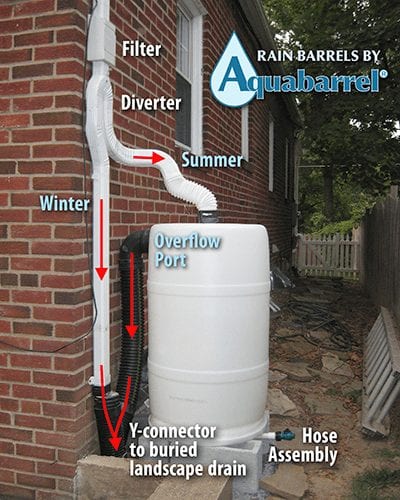Your cart is currently empty!
Spring Garden Yard Cleaning Tips
As the warmer weather rolls in, it’s time to think about doing a spring clean-up, to make sure that the yard and landscape are looking good.
Your cart is currently empty!
Photo:
Waldemar Brandt via Unsplash
Rain barrels are a great way to collect water to use on your lawn and garden. Here are tips on how to save on your water bill and keep water in the ground instead of the storm sewers.
Consider the following characteristics when choosing a rain barrel:
Local garden supply and hardware stores are the obvious places to get a rain barrel. However, rain barrels may occasionally be obtained through local fundraising activities.
Place your rain barrel near where the water will be utilised, such as cleaning the car and gardening equipment or watering the flower beds and yard. Rain barrels should be installed on a firm, flat surface. A full 200L rain barrel may weigh 200kg, or almost 400 pounds (water weight plus barrel weight).

Rain barrel water is unsafe to drink, cook with, or bathe in. It is often gathered from a roof and can transport germs, parasites, and viruses from bird and animal excrement, as well as chemical pollutants from roofing materials. Bacterial growth can occur in the warm, dark atmosphere of a rain barrel.
Follow these suggestions for a healthy garden while watering fruits and vegetables:
Drain your rain barrel after each rain event to ensure that it captures the most volume feasible; this may also aid to limit mosquito population expansion. Always steer overflows away from foundation walls and neighbouring homes to safeguard property.
Rain barrels and their connections require some maintenance:
Before the first frost, follow these simple steps to ensure that your rain barrel continues to last for years.
See more tips on how to manage rainwater and Soak it Up, Slow It Down and Keep it Clean!
You can make your own DIY rain barrel
As the warmer weather rolls in, it’s time to think about doing a spring clean-up, to make sure that the yard and landscape are looking good.
I don’t like to cut or pull wild parsnip on a sunny day. It’s sap likes to splash, and I have scars from the rashes from the wild parsnip.
Cultivate your own mini-orchard indoors with minimal effort and ingenuity with Tips On Growing Citrus Indoors Zone 7 or Lower. Learn the secrets to growing a lemon tree and other citrus fruits inside with the right type of tree, organic lemon, good quality soil and more!
Organize your seeds for winter and get ready for the next growing season- use a Christmas container to store your seed catalogues and packages for convenient access when you need them. Let the too-many cats help you clean off the top two shelves of the plant compound and get ready for the dirt.
Discover the distinction between native plants and wildflowers, and how choosing the right seeds can create a low-maintenance, biodiverse meadow garden.
Learn how to freeze fresh tomatoes amd fruit to preserve their flavor. Follow these expert tips and enjoy your bountiful harvest all year round!
GardeningCalendar.ca gets some funding from advertisers. If you click on links and advertisements at no cost to you, the site may receive a small commission that helps fund its operation.
© 2025 J&S Calendars Ltd.
Leave a Reply
You must be logged in to post a comment.